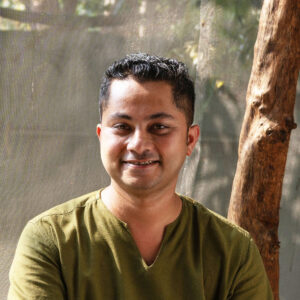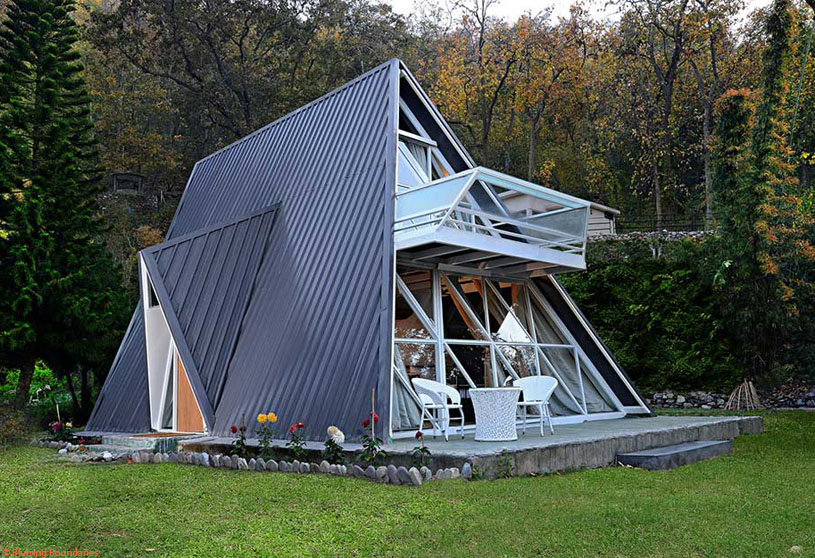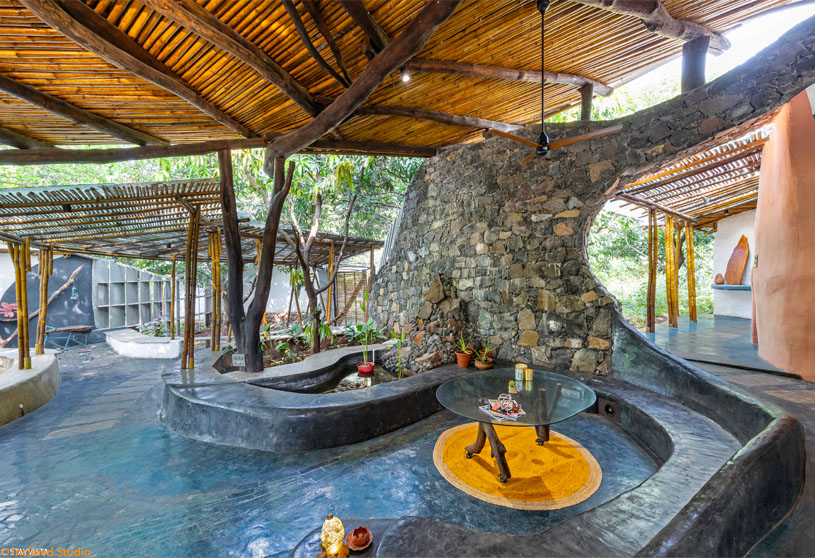(“Text as taken from the website”)
 Shriya Parasrampuria
Shriya Parasrampuria
Shriya has had a chance to explore different materials along with different technologies in architecture and interior in the span of her career. She has found a balance in working from the scale of designing the minute intricacies of detailing to the larger planning of site and buildings. She connects with the user in depth and imbibes their values into the design from the beginning.
 Prashant Dupare
Prashant Dupare
Prashant has a strong belief in adhering to natural systems and following nature’s diktat as a lifestyle. He is a strong advocate of passive design technologies and believes that if you focus on resolution of design based on these technologies in the initial stages, the structure starts on the path of sustainability as it is.
Practice Ideology
Blurring Boundaries is a contextual architecture and interior design studio, engaged in creating sustainable and appropriate design solutions. It is based in Mumbai and Wada, spearheaded by founders Prashant Dupare and Shriya Parasrampuria.
Belief: Their practice is artisanal, innovative, experimental and collaborative with a staunch belief in ‘glocal’ and sustainable practices. It focuses on small details along with the larger perspective and works on all aspects in detail. The designers believe in the power of design to transform users and promote sustainability. They use locally available materials and experiment with them, creating unique contemporary designs. They aim for a seamless transition between physical, psychological, social, and cultural elements in architecture, using biophilic principles to integrate built spaces with surroundings and embrace human nature contrasts.
Philosophy: Their firm philosophy is to embrace the elements of design, material and technology and blur them together, so as to integrate architecture as a seamless part of the user’s life. Each project presents unique challenges and opportunities, necessitating a contextual approach to design. Addressing the conceptual idea at ideation level helps resolve larger issues within the design framework. The final outcome is a rigorous design process that responds to user needs, considering the user’s thought process, project goals, lifestyle, and cycle. Design solutions are meticulously considered to ensure the best fit and individual expressions for the project.
Approach: The focus is on sustainable design, focusing on health benefits and ecological impact. They emphasize the importance of not isolating individuals from their surroundings and provide biophilic architecture designs. They use an experimental approach, questioning standard practices in design and construction. They believe design should be fun-n-play and collaboration with like-minded people opens new avenues of discovery and design.





